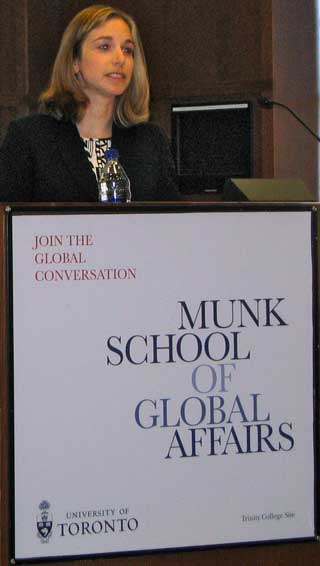Celebrating the Ten Year Anniversary of the Responsibility to Protect: Battling WWII Global Displacement Rates with an Emphasis on Implementation
By Heather Cohen
Tomorrow marks the celebration of the ten year anniversary of the Responsibility to Protect (R2P). At the United Nations, the President of the General Assembly (PGA) will lead a thematic panel discussion from 10:00 a.m. to 1:00 p.m. EST in the Trusteeship Council Chamber. For those of you who will not be in New York, you can tune into the live webcast here.
The event brings together leaders and eminent experts involved in the creation, development, and implementation of the World Summit commitment. Panelists will reflect on the progress made to date, current and emerging challenges, and opportunities to accelerate implementation. Member States and observers will have the opportunity to ask questions and make brief comments from the floor.
From the International Coalition for the Responsibility to Protect:
The adoption of the responsibility to protect at the 2005 World Summit represented a significant step towards realizing the international community’s commitment to end the most horrific forms of violence and persecution. Member States affirmed their primary responsibility to protect their own populations from genocide, war crimes, ethnic cleansing and crimes against humanity and accepted a collective responsibility to assist each other in fulfilling this responsibility. They also declared their preparedness to take timely and decisive action, in accordance with the United Nations Charter and in cooperation with relevant regional organizations as appropriate, when national authorities manifestly fail to protect their populations from these four crimes and violations.
Significant progress has been made during the past decade in elaborating this commitment. The Secretary-General developed a framework for implementation based on three mutually reinforcing pillars, which provides guidance on how States can best protect their populations (Pillar I), assist and encourage each other to uphold their responsibility to protect (Pillar II), and work collectively to ensure timely and decisive response (Pillar III).
Member States have also devoted considerable attention to the responsibility to protect. Since 2009, the General Assembly has adopted a resolution, held a formal debate, and convened six annual informal interactive dialogues. The Security Council has adopted more than thirty resolutions and Presidential Statements that explicitly reference the responsibility to protect. This body has also held an Arria formula meeting on the responsibility to protect. The Human Rights Council has included the principle in fourteen resolutions, covering both thematic and country-specific topics. At the regional level, the African Commission on Human and Peoples’ Rights has adopted a resolution on strengthening the responsibility to protect in Africa and the European Union has continuously supported the responsibility to protect and its operationalization.
This extensive consideration has contributed to the development of a consensus on core aspects of the responsibility to protect. Member States agree on the need to prioritize prevention, to utilize a full range of diplomatic, political, and humanitarian measures when addressing situations that feature the four crimes and violations, to consider military force only as a last resort, and to ensure that implementation of the responsibility to protect is in accordance with the United Nations Charter and other established principles of international law.
The past decade has also witnessed growing commitment to transforming the principle into practice. International engagement in cases like Cote d’Ivoire, Guinea, Kenya and Kyrgyzstan successfully mitigated the risks of genocide, war crimes, crimes against humanity and ethnic cleansing, demonstrating that the collective weight of the international community can make a difference. The responsibility to protect has also spurred the development of new institutional capacity, including global, regional, and sub-regional mechanisms dedicated to the prevention of these crimes and violations. By the end of 2015, fifty one Member States and the European Union had appointed focal points for the responsibility to protect.
Despite this progress, urgent challenges remain. Acts that may constitute genocide, war crimes, ethnic cleansing and crimes against humanity are currently occurring in far too many crises. The world has also witnessed the alarming rise of non-State armed groups that seek to spread violent extremist ideologies and are brazenly perpetrating atrocity crimes. These situations have created protection challenges of a staggering scale and produced widespread humanitarian crises, including a global migration and refugee crisis. These challenges have also stretched the ability of the international community to generate timely and decisive collective responses. The initiative by France and Mexico on restraint on the use of the veto, the Accountability, Coherence and Transparency (ACT) Group Code of Conduct, and similar proposals by the Elders have all encouraged Member States to refrain from taking action that either hinders or delays robust international responses to genocide, war crimes, ethnic cleansing, and crimes against humanity.
In more general terms, not all Member States have become party to the international conventions that set out the legal framework for the prevention and punishment of the crimes specified by the responsibility to protect, including the Convention on the Prevention and Punishment of the Crime of Genocide, the Geneva Conventions and the Rome Statute of the International Criminal Court. The Secretary-General and President of the International Committee of the Red Cross have also recently drawn attention to an alarming decline in respect for international humanitarian and human rights law, particularly in situations where national authorities have argued that exceptional security threats or political crises justify temporary abrogation from their legal obligations.
Given the ongoing occurrence of these grave international crimes and in light of the progress made over the past decade, it is clear that the responsibility to protect remains a vital and enduring commitment. As Secretary-General Ban Ki-moon has noted, it “offers an alternative to indifference and fatalism” and represents a “milestone in transforming international concern about people facing mortal danger into meaningful response.” The challenge now facing the international community is both practical and political: how to best uphold its responsibility to protect populations from genocide, war crimes, ethnic cleansing, and crimes against humanity by accelerating implementation.
Ten years since the universal adoption of R2P, it remains a vital and enduring commitment, but the next decade must be about moving from commitment to implementation. Partnerships for prevention will be key and CLAIHR is proud to be a member of the International Coalition for the Responsibility to Protect. In the words of the PGA, “[a]ll of us, at the United Nations and beyond, have responsibility to take greater steps to promote tolerance, human rights, and human dignity.”



